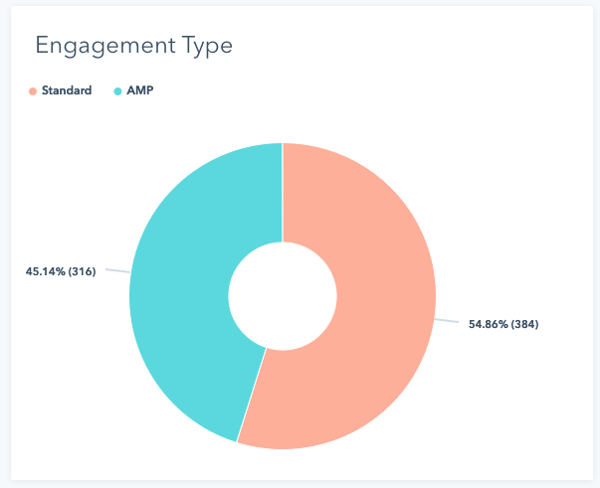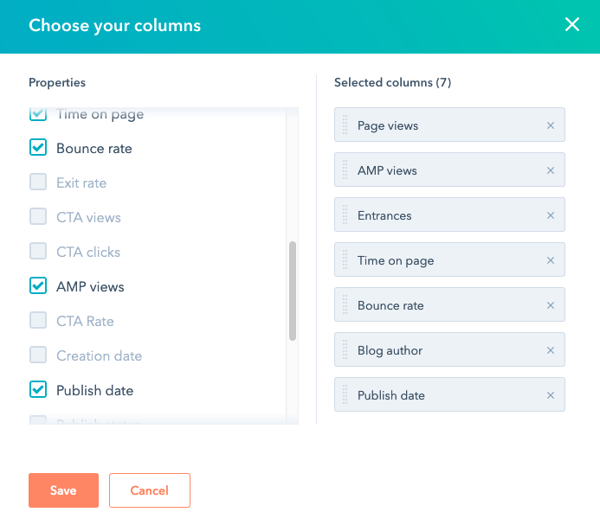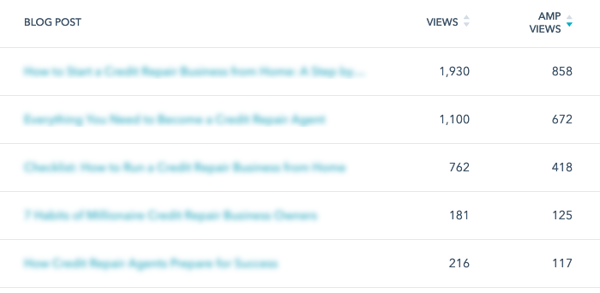How to Measure & Track AMP Performance
Written by: Tanya Wigmore
Published: 12 June, 2019
You have AMP enabled on your site, now you need to know if it's working. Here's how you can see if AMP is worth the hype for your website:
(First, if you haven't enabled AMP you can get the how-to enable AMP for HubSpot guide here or pop over and install this handy AMP plugin for your WordPress site.)
Make sure Google is 'reading' your AMP pages correctly
You can't just assume that your AMP plugin got everything right the first time. To see how Google is interpreting your AMP code you'll need to pop into Google Search Console. Once you're in there, head on over to the AMP section on the left hand side and you'll see how many pages are being indexed with AMP data.
Not seeing a navigation menu that says "AMP" like the screenshot below? It could indicate that Google has found no AMP coding on your site.
![]() If your AMP report looks like this 👆you'll need to go back and troubleshoot what happened. The likely suspects are:
If your AMP report looks like this 👆you'll need to go back and troubleshoot what happened. The likely suspects are:
- new site template
- you're looking at http vs https (or vice versa)
- your plugin is outdated/disabled
But let's assume that your Google AMP report in Google Search Console shows that you have nice, healthy AMP growth on the site. How can you translate "is being indexed" to "is driving traffic"?
Seeing AMP Traffic in HubSpot
If you have a HubSpot blog, you can get AMP data on a per-post basis if you pop into your page summary in HubSpot. For this post, AMP views are 45% of all views of this page. Incredible!

But going into each and every page to see how much AMP traffic you've received is just not practical. Instead, hop over to Reports > Analytics Tools > Website Analytics. As HubSpot only has AMP enabled for blog posts at the moment, you can switch your "Page Types" view to "Blog Posts". By default you're not going to see the AMP data in this report so you'll need to click "Edit columns" and click "AMP Views" as a column to show in the report.

Now you can see how many of your blog post pageviews are AMP pageviews.

Tracking AMP performance on Google
Your AMP data in HubSpot is great for showing you how many pageviews you had, but what about before people get to your site? Are your AMP pages performing well in the search results?
For this you'll want to pop back into Google Search Console and take a look at the Performance report. By default, you'll be looking at the total clicks and impressions for Web Traffic over the past three months. If you click on the "+ New" filter option and select "Search appearance" you'll be able to change that to see your AMP data.
 Now you can start doing some charting and see if your increased AMP traffic is at the expense of your non-AMP traffic, or if it's all just extra bonus traffic. You can also identify certain content pieces that are doing well, which ones aren't and you can compare that data over some different time periods.
Now you can start doing some charting and see if your increased AMP traffic is at the expense of your non-AMP traffic, or if it's all just extra bonus traffic. You can also identify certain content pieces that are doing well, which ones aren't and you can compare that data over some different time periods.
Finding AMP data in Google Analytics
AMP pages are fast to load because they strip out a bunch of the extra code that can weigh down a page. Like Google Analytics tracking code.
While it is possible to track AMP pages in Google Analytics, it takes a little extra work to make it happen. You can read more about that here and get the AMP Analytics instructions for developers here.
Have you noticed your mobile pageviews decreasing? There might be reason to believe it's because your AMP pages are taking that traffic. To really be sure, you're going to want that AMP tracking installed.
Tracking AMP rankings in SEMrush
Some keyword ranking tools, like SEMrush, have added AMP data to their ranking tools. For some of our client, the AMP listings are competing with the local business listings in the top ranking positions. Tracking your AMP rankings is a great way to see how the AMP rankings are disrupting or assisting your regular Google SERP listings.
 Tracking conversions on AMP pages
Tracking conversions on AMP pages
While your AMP pages may not be loading all kinds of tracking codes, you can still use forms and calls-to-action on your AMP pages. With AMP pages often having your main navigation stripped out (or only having a basic version of it) making sure that you have those calls-to-action and internal links to other pages to help facilitate conversions is very important. Recently, we've seen Google stripping out the "click to site" feature in the AMP listings which makes those internal links essential.
Is Google moving towards showing AMP content with stripped out links and not allowing people to navigate to the publishers site? That remains to be seen but there is some speculation.
Until then, make sure you're updating your pages with AMP code so that you can be competitive in the search results and make sure you're tracking those results that might be flying under the radar with your default analytics tracking.

Written by: Tanya Wigmore
Tanya Wigmore is the founder of CRO:NYX Digital and is passionate about growing healthy teams and businesses. With an extensive background in inbound marketing, search marketing, web analytics, CRO & UX, she's always finding new ways to apply optimize and improve.
Solutions
Results
Resources
About
Contact
© CRONYX Digital SEZC







.png)
.png)
.png)
.png)